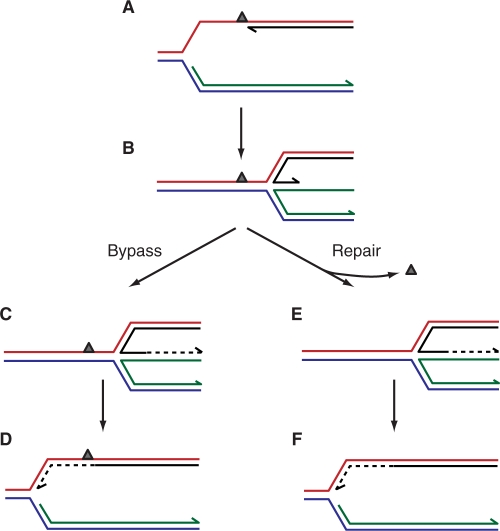Figure 5.
Fork regression followed by reversal. (A) A lesion in the leading strand template could result in the formation of a blocked fork with a gap on the leading strand. (B) Fork regression would reposition the 3′ end of the blocked leading strand so that it would be paired with the nascent lagging strand, whilst the DNA lesion would be relocated back into the reformed parental duplex. (C and D) Bypass of the lesion could be effected by extension of the leading strand using the lagging strand as a template followed by reversal of fork regression. (E and F) Repositioning of the lesion back into the parental duplex could also facilitate repair rather than bypass. Extension of the leading strand using the nascent lagging strand and reversal of regression would reconstitute a fork structure on to which the replication apparatus could be reloaded.

